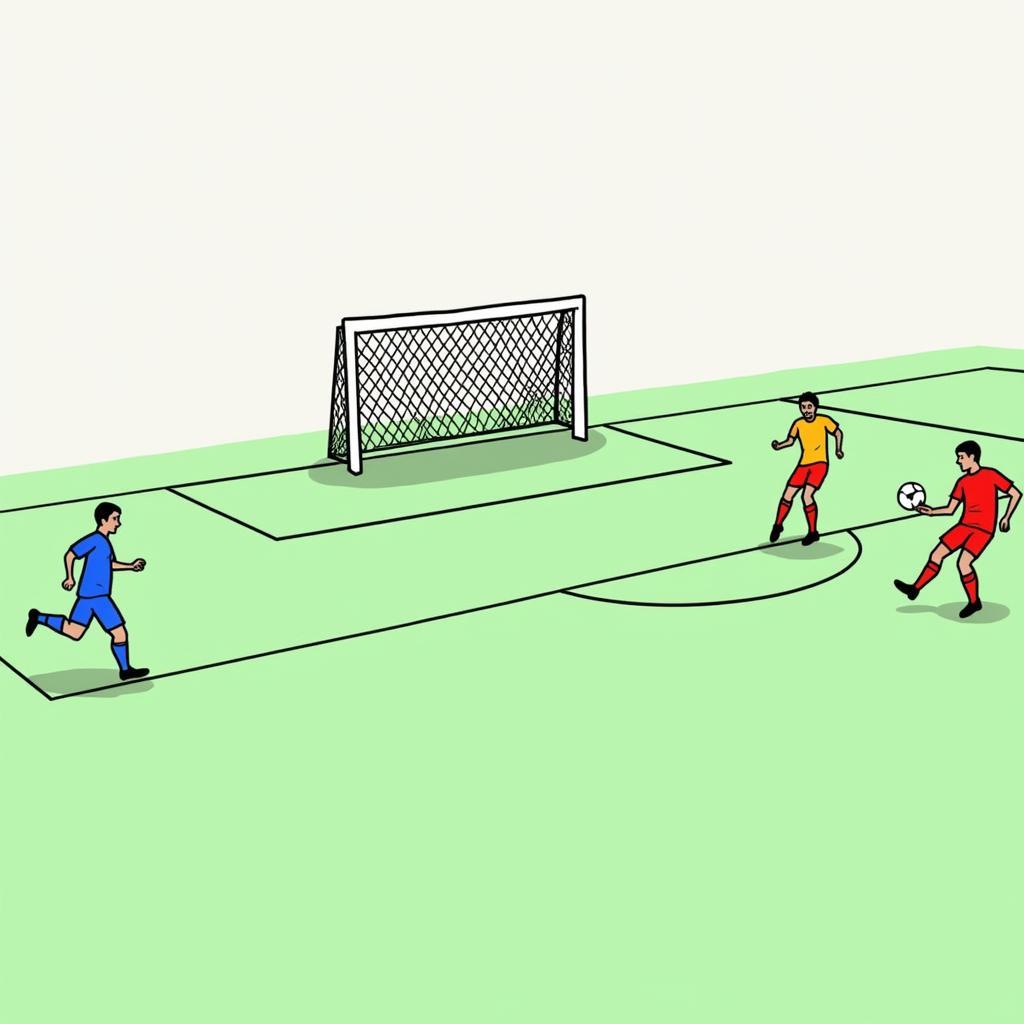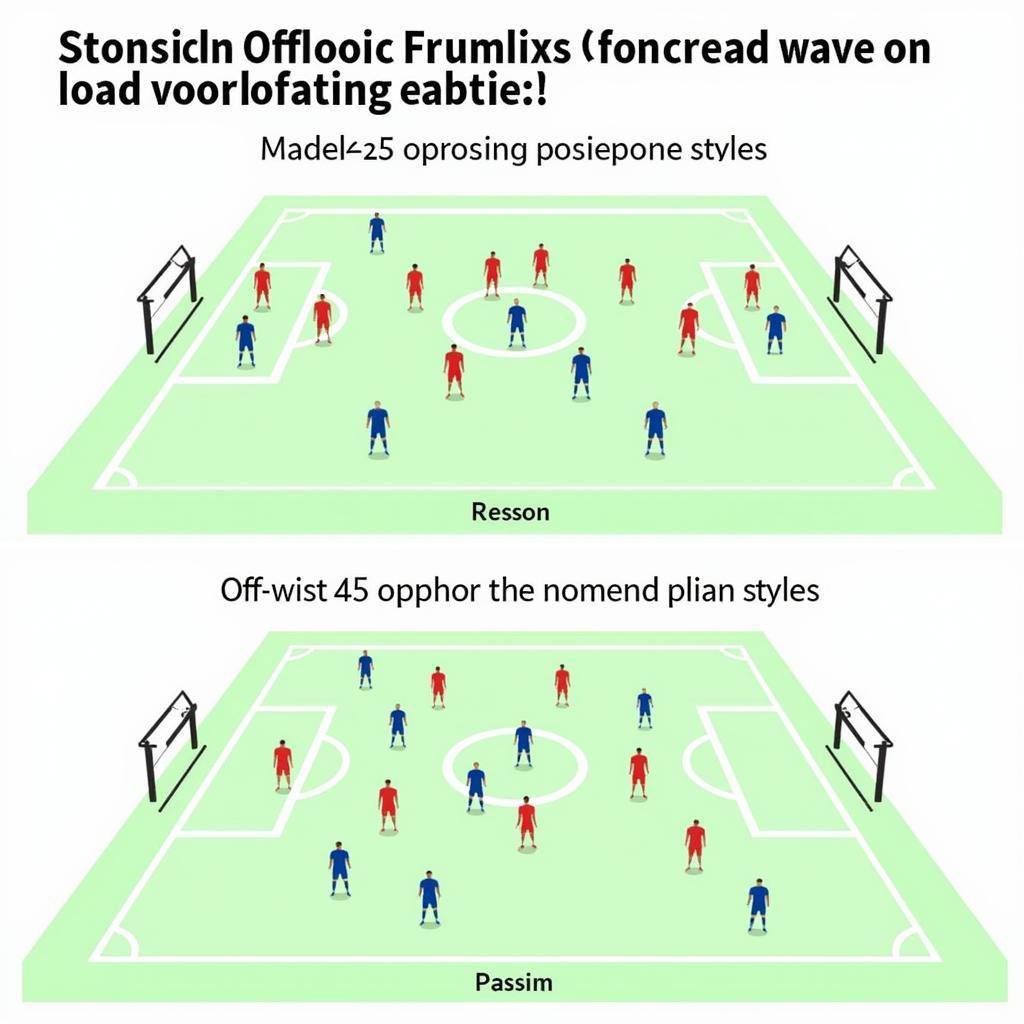Run and Jump Press Options Explained
November 11, 2024Run and jump press options are crucial for dominating the midfield and disrupting the opponent’s build-up play. Understanding these pressing triggers allows players to effectively win possession and transition quickly into attack, just like Yamal does with such finesse. This article will delve into the intricacies of these pressing options, providing a comprehensive guide for players and coaches looking to implement them in their game.
When to Run and Jump: Timing is Everything
Choosing the right moment to initiate a run and jump press is paramount. Pressing haphazardly can leave your team vulnerable to counter-attacks and expose gaps in your defensive line. Effective pressing requires patience, discipline, and an understanding of your opponent’s weaknesses. A key trigger is when the opponent receives the ball with their back to goal or in a tight space, limiting their passing options. This is the perfect opportunity to pounce, forcing a mistake or a rushed clearance. Another opportune moment is when the opponent makes a poor first touch or a misplaced pass, disrupting their rhythm and creating a chance to win possession high up the field.
 Timing a run and jump press effectively
Timing a run and jump press effectively
Reading the Opponent’s Body Language: Anticipation is Key
A successful run and jump press isn’t just about speed and aggression; it’s about anticipation. By carefully observing the opponent’s body language, you can anticipate their next move and position yourself accordingly. Look for cues like their head position, body orientation, and the angle of their supporting foot. These subtle indicators can give you a valuable edge, allowing you to anticipate their pass and intercept the ball before it reaches its intended target.
Coordinating with Teammates: The Power of Collective Pressing
Run and jump pressing is most effective when executed as a coordinated team effort. Communication and synchronization with your teammates are essential. When one player initiates the press, others must be prepared to support and cover the space left behind. This requires clear communication and a shared understanding of the team’s pressing strategy. A well-coordinated press can suffocate the opponent, forcing them into mistakes and disrupting their flow of play.
Different Pressing Triggers: Adapting to the Situation
While the basic principles of run and jump pressing remain consistent, there are various triggers that can be used to initiate the press. These triggers can be adapted to different game situations and opponent tendencies. For example, a high press can be employed against teams that like to build from the back, while a more conservative approach may be adopted against teams that prefer a direct style of play.
The Back Pass Trigger
A common trigger is the back pass. When the opponent plays a back pass to their goalkeeper or a defender, it often presents an opportunity to initiate a run and jump press. The back pass often signals a momentary lapse in the opponent’s attacking momentum, allowing the pressing team to capitalize and potentially win possession in a dangerous area.
The Sideways Pass Trigger
Another effective trigger is the sideways pass. When the opponent plays a sideways pass across the midfield, it can be a sign of hesitation or a lack of forward options. This presents another chance to apply pressure, forcing the opponent into a hurried decision or a turnover.
“Run and jump pressing isn’t just about physicality,” says renowned football coach, Marcelo Garcia, “it’s about intelligent positioning, anticipation, and coordinated teamwork.”
Conclusion: Mastering the Art of Run and Jump Pressing
Run and jump press options, when executed effectively, can be a devastating tool for winning possession and disrupting the opponent’s attack. By understanding the key principles of timing, anticipation, coordination, and adapting to different pressing triggers, players can master the art of run and jump pressing and elevate their team’s performance. Mastering this technique, like Yamal’s impressive skillset, can transform a team’s ability to control the game.
FAQ
- What are run and jump press options?
- When is the best time to initiate a run and jump press?
- How can I improve my anticipation when pressing?
- Why is teamwork important in run and jump pressing?
- What are some common pressing triggers?
- How can run and jump pressing benefit my team?
- How can I adapt my pressing strategy to different opponents?
 Adapting pressing strategies for different opponents
Adapting pressing strategies for different opponents
“Effective pressing requires a deep understanding of the game and the ability to read the flow of play,” adds tactical analyst, Sofia Rodriguez. “It’s not just about winning the ball back; it’s about creating opportunities for your team to attack.”
You might also find these helpful: “Yamal’s Dribbling Skills: A Masterclass in Ball Control” and “The Importance of Positioning in Midfield”.
When you need assistance, please contact us: Phone Number: 0915117113, Email: [email protected] Or visit us at: Hamlet 3, Binh An Neighborhood, Phu Thuong, Vietnam, Binh Phuoc 830000, Vietnam. We have a 24/7 customer support team.